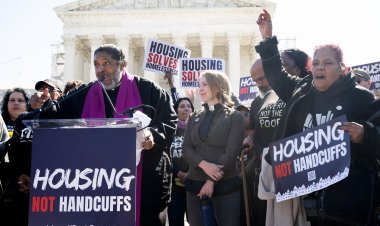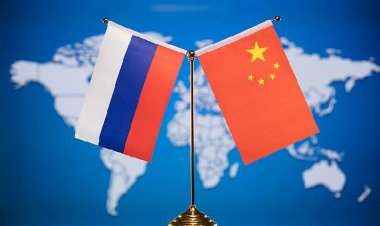'What’s left for Bob?’ Selection of Lutnick Prompts Speculation About Lighthizer's Future Influence
The first-term trade representative for Trump has played a key role in shaping many of the protectionist proposals put forth by the president-elect.

Lighthizer, who played a pivotal role in shaping much of Trump’s tariff strategy during his first term, was considered for several economic posts in the Trump Cabinet, including the Commerce role, a potential “trade czar” position in the White House, or even a return as U.S. Trade Representative. He is also still viewed as a long-shot contender for Treasury Secretary, a position that Lutnick and various elite Wall Street executives are seeking.
In announcing Lutnick for Commerce, Trump stated that his transition co-chair and billionaire financier will oversee the president-elect’s “Tariff and Trade agenda” and will have “direct responsibility for the Office of the United States Trade Representative,” adding to speculation regarding Lighthizer’s future in trade and economic policy since he had been a prominent figure throughout the campaign. This development raises questions about the extent to which the president-elect will implement the significant tariff increases that Lighthizer had consistently advocated before the election.
“I was assuming that if [Lighthizer] didn’t go back to USTR, he’d end up in the White House as some kind of trade czar, but this sounds as though Lutnick is going to be that,” remarked Bill Reinsch, a former Commerce official during the Clinton administration and now affiliated with the Center for Strategic and International Studies. “So, what’s left for Bob?"
The speculation around Lighthizer's absence from a high-profile economic role has reignited advocacy from various political figures critical of the decades-long free trade consensus in Washington. Matthew Schmitz, founder of the populist right magazine Compact, wrote a New York Times op-ed urging Trump to reinstate Lighthizer in a Cabinet position. Similarly, Peter Harrell, who previously served as President Joe Biden’s international trade adviser, expressed support for Lighthizer's potential return on X, praising him for his vision and effective negotiation skills.
Not selecting Lighthizer for a leading economic position might signal that Trump could shy away from pursuing the aggressive trade tactics that were central to his campaign—such as implementing a 20 percent across-the-board tariff and imposing much higher duties on China. Lighthizer and his team were critical in developing these proposals and have been preparing executive orders to implement such tariff hikes, alongside the economic rationale for them.
While Lighthizer did not comment on the matter, his associates believe he still remains in contention for a key role.
“Lighthizer was a critical figure to the first administration and the president knows that,” shared a source close to Lighthizer, who requested anonymity to discuss sensitive personnel matters. “It’s not like he’s forgotten all the work Bob has done or how much they’ve talked over the last few years.”
Trump has expressed frustration over the continuous competition among Wall Street figures vying for the Treasury Secretary position, leading him to be cautious of their historical views that downplay tariffs and promote free trade. This might create an opportunity for a more protectionist alternative like Lighthizer, although other contenders, such as financier Marc Rowan or Senator Bill Hagerty, appear to be more prominent. If Lighthizer isn’t appointed as Treasury Secretary, he could still be designated as Trump’s trade representative or serve as a non-confirmable White House advisor, albeit such roles would theoretically report to Lutnick.
USTR veterans note that both Trump and past presidents have aimed to prioritize the Commerce Department over USTR concerning trade matters. In 2017, Trump’s transition team indicated that then-Commerce Secretary nominee Wilbur Ross would oversee trade responsibilities and represent the U.S. in renegotiating the North American Free Trade Agreement, a task typically assigned to the trade chief. However, that plan did not materialize; Lighthizer emerged as the prominent trade policy advisor, leading NAFTA renegotiation efforts and high-stakes Congressional discussions. Observers speculate that similar dynamics could unfold this time.
“I went through this in 2015. I was working in the Senate, and I recall that President Obama then put forward a reorganization plan where he wanted to … fold USTR into Commerce,” said Everett Eissenstat, former deputy assistant to President Trump for international economic affairs, during a Wednesday webinar. “[Capitol] Hill was very, very ... adamantly against it. ... Clinton tried it. Reagan tried it."
Currently, some senior lawmakers on trade are indicating they will resist any attempt by Trump to diminish USTR’s role beneath Commerce, asserting that any such changes would require Congressional approval and cannot be executed by the president alone.
"I think keeping the independence of USTR is very important, but also it is an offshoot of congressional authority," stated Rep. Richard Neal, the top Democrat on the House Ways and Means Committee, which oversees trade. “USTR was constructed by Congress, and the only way it can be deconstructed is by Congress.”
Doug Palmer and Ari Hawkins contributed reporting.
James del Carmen for TROIB News
Find more stories on Business, Economy and Finance in TROIB business












